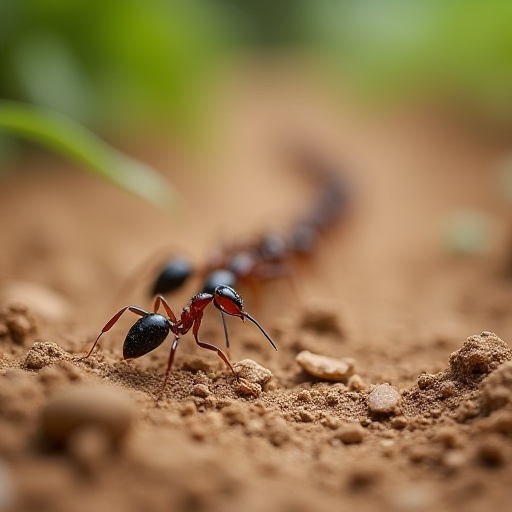
Why Do Ants Follow Each Other in a Line?
Ants are one of the most fascinating creatures in the insect world, known for their highly organized social structures and collective behaviors. One particularly intriguing behavior that often captures human curiosity is their tendency to follow each other in a line. This article will delve into the scientific and biological reasons behind this behavior, exploring the mechanisms and evolutionary advantages it provides to these industrious insects.
The Science Behind Ant Trails
Chemical Communication
The primary reason ants follow each other in a line is due to a sophisticated system of chemical communication. Ants utilize pheromones, which are chemical signals released by an individual and detected by others, to coordinate their movements and behaviors. When a worker ant finds a food source, it will return to the colony while releasing pheromones along the path it takes. This trail of pheromones serves as a guide for other ants to follow.
Pheromone Trails
These pheromone trails are crucial for maintaining the efficiency of the colony's foraging activities. As more ants travel back and forth between the food source and the nest, they reinforce the pheromone trail by adding their own pheromones, making the path stronger and more appealing to other ants. This continuous reinforcement is why you often see ants walking in a single file line — they are following the most chemically marked path.
The Role of Ants' Sensory Organs
Ants have highly developed sensory organs that allow them to detect pheromones. Their antennae are equipped with specialized receptors that can pick up even the slightest chemical signals. This sensitivity enables ants to follow pheromone trails with remarkable precision, even if the trail has been laid minutes or hours earlier.
The Benefits of Following in a Line
Efficiency in Foraging
By following a pheromone trail, ants increase the efficiency of their foraging activities. This system allows them to quickly locate food sources and transport food back to the colony with minimal energy expenditure. The line formation also reduces the chance of individual ants getting lost or wandering into dangerous territory.
Cooperative Problem Solving
Following in a line also facilitates cooperative problem-solving. When faced with obstacles or changes in the environment, ants can adapt their paths by creating new pheromone trails or modifying existing ones. This adaptability ensures that the colony can effectively respond to new challenges, such as predators or changes in food availability.
Safety in Numbers
Traveling in a line also provides safety in numbers. By moving together, ants can better defend themselves against predators. The collective movement can deter potential threats, and if an ant is attacked, others can quickly respond to assist or retaliate.
Evolutionary Perspective
From an evolutionary standpoint, the behavior of following in a line represents a highly successful survival strategy. Ants have been around for more than 100 million years, and their ability to efficiently organize and coordinate their activities has contributed significantly to their resilience and adaptability. The use of pheromone trails and line formation is a testament to the complex social structures and communication systems that have evolved over millions of years.
Conclusion
Ants following each other in a line is a remarkable demonstration of chemical communication and collective behavior. This phenomenon is driven by pheromone trails, which guide ants efficiently between their nest and food sources. The benefits of this behavior include enhanced foraging efficiency, improved problem-solving capabilities, and increased safety. Understanding why ants follow each other in a line not only provides insight into their complex social structures but also highlights the incredible adaptability and resilience of these tiny yet powerful creatures.
